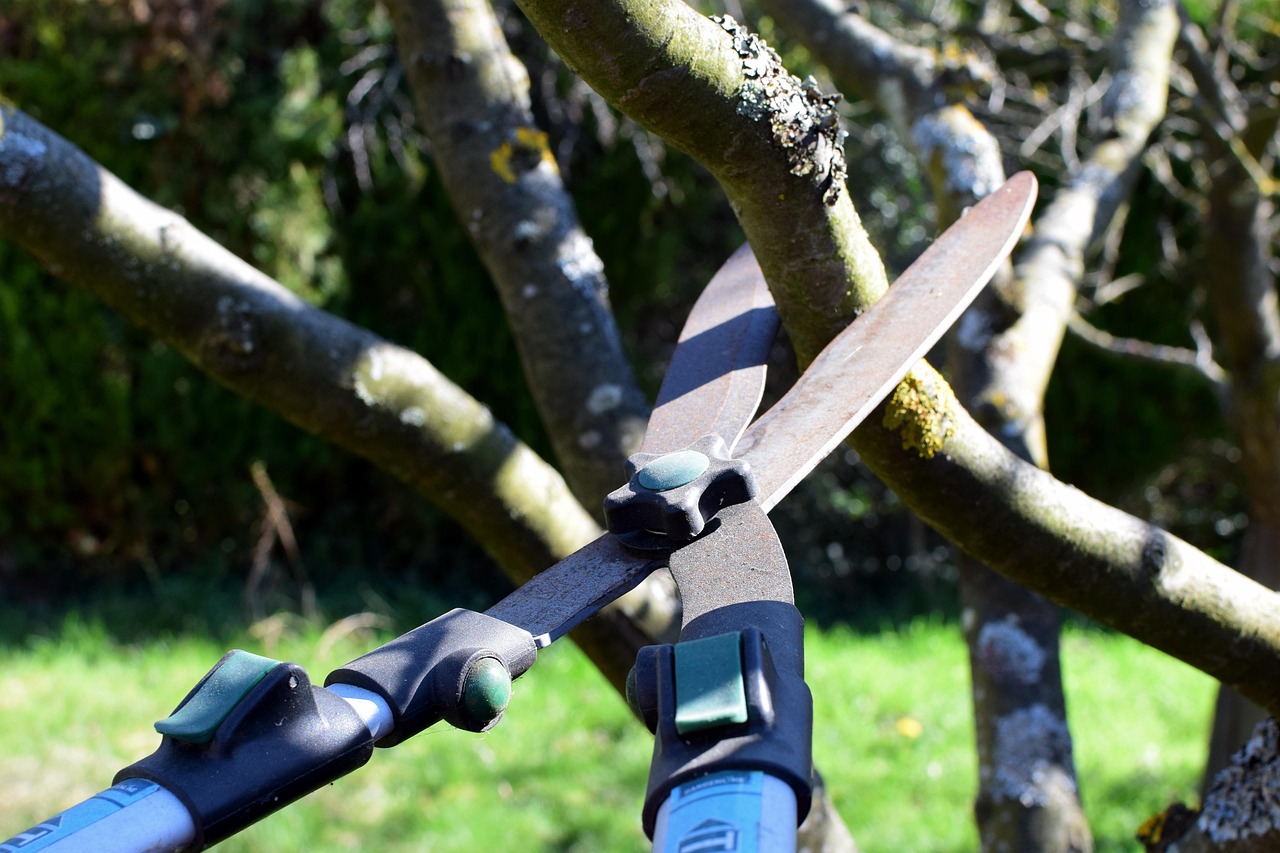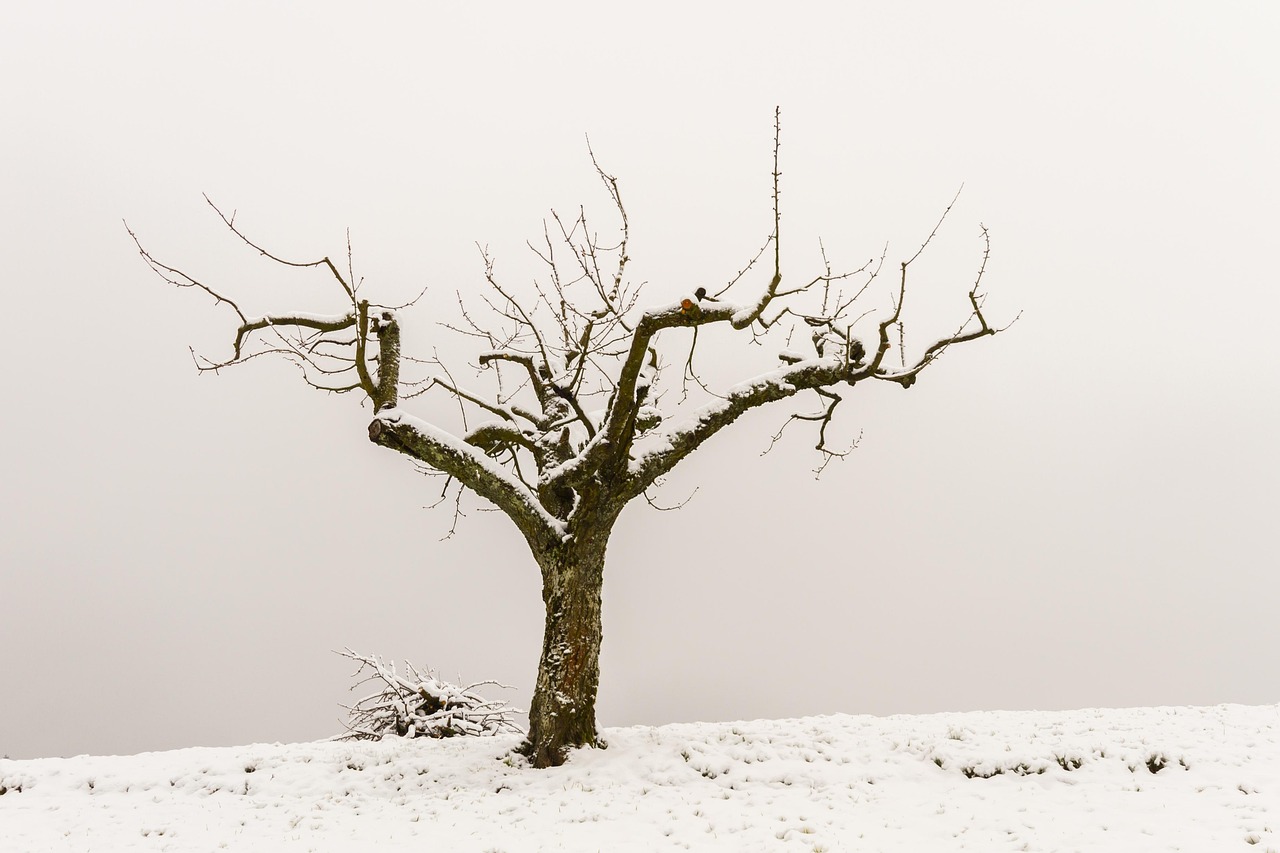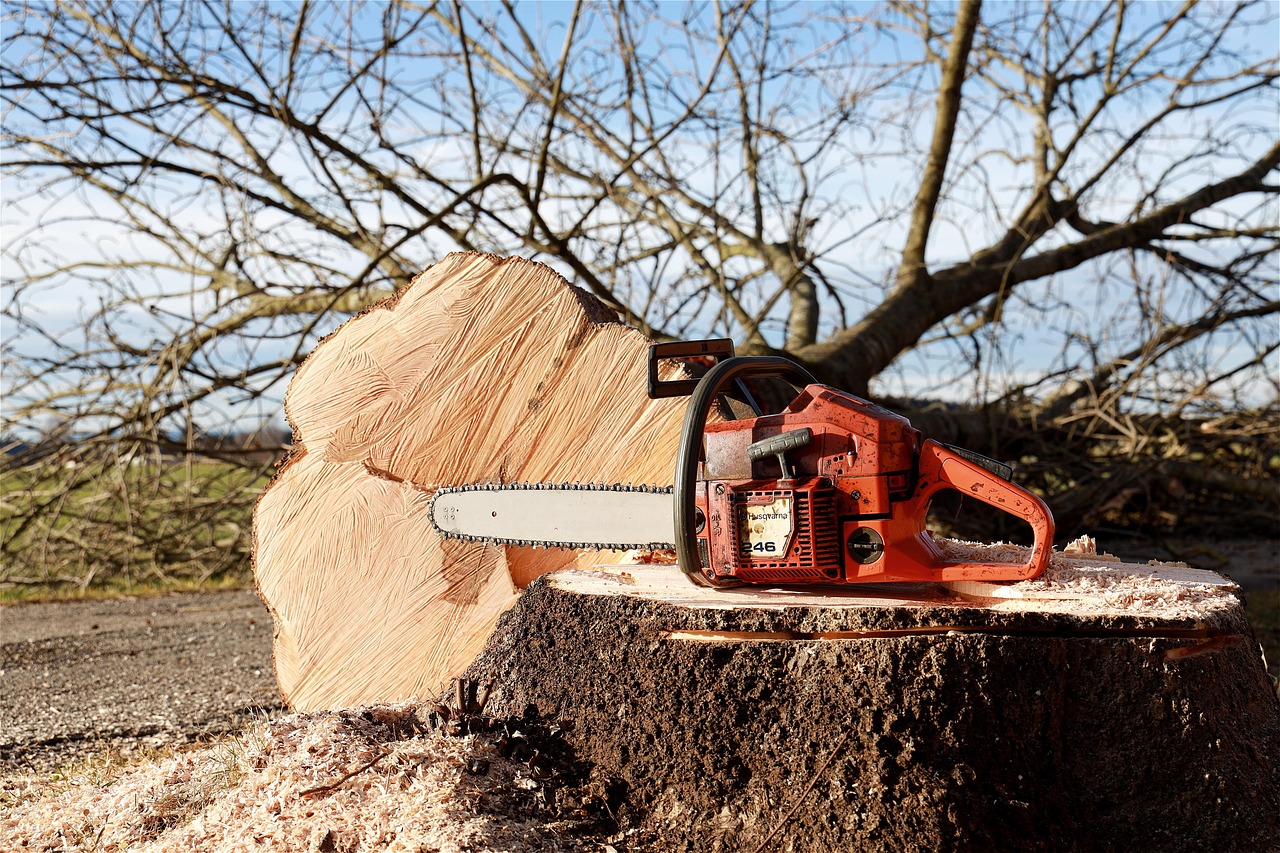Pruning snowball trees is essential for promoting healthy growth and ensuring stunning winter displays. By removing dead or overgrown branches, you can enhance their shape and encourage vibrant blooms, creating a beautiful landscape during the colder months.
Snowball trees, also known as Viburnum opulus, are popular ornamental plants known for their large, round clusters of white flowers. These trees are often favored for their stunning winter displays when the bright white blooms contrast beautifully against the stark backdrop of snow. Pruning is a crucial aspect of maintaining the health and aesthetics of snowball trees. Proper pruning techniques not only improve the overall appearance but also promote vigorous growth and flowering in the following seasons.

Understanding the right time to prune snowball trees is vital for optimal results. Typically, the best time to prune is in late winter or early spring, just before new growth begins. This timing allows you to shape the tree while minimizing stress and damage to the plant. Regular maintenance can help prevent overcrowding, which can lead to disease and hinder airflow among branches.
Benefits of Pruning Snowball Trees
Pruning offers numerous advantages that contribute to the health and beauty of snowball trees. Some key benefits include:
- Improved Air Circulation: Pruning helps remove dense growth, allowing better airflow among branches. This reduces the risk of fungal diseases.
- Enhanced Flower Production: By cutting back old wood, you encourage the growth of new stems that produce more flowers.
- Better Shape and Structure: Regular pruning helps maintain an attractive shape and structure, enhancing the overall appearance of the tree.
- Increased Sunlight Exposure: Removing excess branches enables sunlight to reach more parts of the tree, supporting healthy growth.
When approaching pruning, it is important to use proper techniques to avoid damaging the tree. Using clean, sharp tools is essential to make precise cuts that promote healing. Additionally, understanding the different types of cuts can help achieve desired outcomes.

Understanding Pruning Techniques
There are several pruning techniques that gardeners can utilize when caring for snowball trees. Each technique serves a specific purpose, contributing to the overall health and aesthetics of the tree.
Crown Thinning
Crown thinning involves selectively removing branches within the tree’s crown. This technique enhances airflow and light penetration without significantly altering the tree’s shape. It is particularly beneficial for trees that have become too dense over time.
Crown Raising
Crown raising is the process of removing lower branches to elevate the canopy of the tree. This technique is useful for creating clearance for pedestrians or vehicles beneath the tree while also improving visibility of the tree’s overall form.

Crown Reduction
Crown reduction entails shortening the length of branches to control the size of the tree. This technique is effective in preventing overgrowth and maintaining a manageable size without compromising the natural shape of the tree.
Deadwooding
Deadwooding refers to the removal of dead or diseased branches. This practice is crucial for maintaining tree health and preventing potential hazards. Regularly inspecting your snowball tree for deadwood can help ensure it remains vibrant and healthy.
Tools Needed for Pruning
Having the right tools is essential for effective pruning. The following table outlines some common pruning tools and their uses:

| Tool | Use |
|---|---|
| Hand Pruners | Ideal for cutting small branches up to ¾ inch in diameter. |
| Loppers | Used for larger branches, typically up to 1½ inches thick. |
| Saw | Necessary for cutting thicker branches that cannot be handled by pruners or loppers. |
| Gloves | Protects hands from sharp tools and thorny branches. |
| Disinfectant | Used to clean tools before and after use to prevent disease spread. |
By using these tools effectively, you can ensure clean cuts that promote healthier growth in your snowball trees. Regular maintenance will not only enhance their beauty but also contribute to a more robust plant capable of withstanding harsh winter conditions.
It is also advisable to observe your snowball trees throughout the seasons. Monitoring their growth and health can help you determine when and how much pruning is necessary. By being proactive in your care routine, you can enjoy stunning winter displays year after year.
Timing Your Pruning for Optimal Results
Timing is crucial when it comes to pruning snowball trees. To achieve the best results, you should consider both the season and the specific growth patterns of the tree. Understanding when to prune can enhance flowering and overall health.
Best Time to Prune
The ideal time to prune snowball trees is during late winter or early spring, specifically before new buds begin to swell. This timing allows you to:
- Minimize Stress: Pruning before the growing season reduces stress on the tree, allowing it to focus on new growth.
- Encourage New Growth: Early pruning promotes vigorous growth and flowering in the upcoming season.
- Assess Tree Condition: During this period, you can easily identify dead or diseased branches, making it simpler to determine what needs to be removed.
Pruning during the fall is generally discouraged, as it can expose the tree to winter damage. It is also important to avoid heavy pruning in summer, as this can lead to excessive stress and reduce blooming potential.
Techniques for Effective Pruning
Implementing the right techniques can greatly influence the health and appearance of your snowball tree. Here are several effective pruning methods:
Step-by-Step Pruning Process
The following steps outline a basic pruning process for snowball trees:
- Inspect the Tree: Begin by examining the tree for dead, diseased, or damaged branches.
- Remove Deadwood: Cut back any dead or dying branches to healthy wood. This helps prevent disease and promotes new growth.
- Thin Out Crowded Areas: Identify areas where branches cross or crowd one another. Selectively prune these branches to improve air circulation.
- Shape the Tree: Trim back branches that disrupt the overall shape of the tree. Maintain a balanced appearance for aesthetic appeal.
- Clean Up: After pruning, gather and dispose of all clippings. This helps prevent pest infestations and diseases.
This systematic approach ensures that you address all necessary aspects of pruning for optimal health and beauty.
Common Mistakes to Avoid
Many gardeners make mistakes when pruning snowball trees that can hinder their growth and flowering potential. Here are some common pitfalls to avoid:
- Over-Pruning: Removing too much foliage can severely stress the tree and impact its ability to flower.
- Ignoring Tree Structure: Failing to maintain the natural structure of the tree can lead to an unattractive appearance and poor growth.
- Improper Cutting Techniques: Making jagged cuts or tearing bark can cause damage that leads to disease. Always use clean, sharp tools.
- Neglecting Timing: Pruning at the wrong time of year can interfere with flowering and lead to decreased overall health.
Avoiding these mistakes will help ensure that your snowball trees thrive and produce beautiful displays in winter.
Pest and Disease Management
Maintaining healthy snowball trees includes being vigilant about pests and diseases that can affect their growth. Regular monitoring can help you catch issues early on. Here are common problems to look out for:
Pests
- Aphids: These small insects can cause leaf curling and yellowing. Control them with insecticidal soap or neem oil.
- Spider Mites: These pests thrive in dry conditions and can lead to stippled leaves. Increase humidity around your tree or use miticides as needed.
- Scale Insects: These pests appear as small bumps on branches and leaves. Horticultural oil can help manage their populations.
Diseases
- Canker: This fungal disease causes dieback and can be managed by removing affected branches.
- Powdery Mildew: This fungal infection appears as a white powdery substance on leaves. Increasing air circulation through proper pruning can help prevent it.
- Leaf Spot: Various fungi cause spots on leaves. Removing infected leaves early in the season can reduce spread.
If you notice any signs of pests or disease, addressing them promptly is essential for maintaining the health of your snowball trees.
Creating a Stunning Winter Display
A well-pruned snowball tree not only enhances your garden’s aesthetics but also creates a stunning winter display. Here are some tips for ensuring your snowball tree stands out during the colder months:
- Selective Pruning: Focus on shaping your tree in a way that highlights its natural beauty while allowing for ample blooms.
- Add Complementary Plants: Surround your snowball tree with evergreens or other winter-blooming plants to enhance visual interest.
- Consider Lighting: Strategically placed outdoor lights can illuminate your snowball tree’s features during winter evenings, creating a magical effect.
By implementing these strategies, you can create a captivating winter landscape that showcases the beauty of your snowball trees throughout the season.
Seasonal Care After Pruning
After pruning your snowball trees, it is essential to provide the proper care throughout the seasons to ensure they remain healthy and vibrant. Seasonal care involves monitoring the tree’s health, applying fertilizers, and protecting it from environmental stresses.
Spring Care
In spring, as new growth begins to emerge, focus on supporting your snowball tree’s health:
- Fertilization: Apply a balanced, slow-release fertilizer designed for flowering trees. This helps promote healthy growth and abundant blooms.
- Watering: Ensure your tree receives adequate water during dry spells. A deep watering once a week is typically sufficient, especially if there is little rainfall.
- Pest Monitoring: Keep an eye out for pests, as spring is when many insects become active. Early detection can help prevent infestations.
Summer Care
During the summer months, your snowball tree will be in full growth mode. Here are some tips for summer care:
- Mulching: Apply a layer of organic mulch around the base of the tree. This helps retain moisture, suppress weeds, and regulate soil temperature.
- Regular Watering: Continue to provide regular watering, especially during hot spells. Be careful not to overwater, as this can lead to root rot.
- Pruning Maintenance: Monitor for any new growth that may require additional shaping or removal of crowded branches.
Fall Care
As the leaves begin to fall, it is essential to prepare your snowball tree for winter:
- Inspect for Diseases: Check for any signs of disease or pest infestations. Treat any issues promptly to prevent them from spreading during dormancy.
- Watering Needs: Continue watering as needed until the ground freezes. Ensuring the tree is hydrated before winter can help it withstand cold temperatures.
- Fertilization: Consider applying a low-nitrogen fertilizer in late fall to support root development without encouraging excessive top growth.
Winter Protection
Winter can be harsh for snowball trees, especially in areas with extreme cold. Here are some strategies to protect your trees during winter months:
- Wrap the Trunk: Use tree wrap or burlap to protect young trees from frost damage and sunscald. Be sure to remove the wrap in spring to allow for proper air circulation.
- Mulch Application: Increase the mulch layer around the base of the tree to insulate the roots and retain moisture during winter.
- Avoid Salt Damage: If you live in an area where roads are salted during winter, consider using barriers like burlap to shield your tree from salt spray.
Additional Landscape Considerations
In addition to caring for your snowball trees, consider how they fit into your overall landscape design. A well-planned garden contributes to both aesthetic appeal and ecological health.
Diverse Planting Strategies
Diversity in planting can create a more resilient landscape. Here are some ideas:
- Companion Planting: Pair snowball trees with other flowering plants that bloom at different times of the year. This strategy provides continuous color and attracts beneficial pollinators.
- Layered Planting: Create layers of plants by placing smaller shrubs or perennials in front of your snowball tree. This adds depth and visual interest to your garden.
- Native Plants: Incorporate native plants that are well-adapted to your region’s climate. These plants often require less maintenance and support local wildlife.
Creating Seasonal Interest
Aiming for year-round beauty in your garden can enhance its overall appeal. Here are some suggestions for creating seasonal interest:
- Select Varied Bloom Times: Choose plants that bloom at different times to ensure that there is always something in flower.
- Add Fall Color: Incorporate deciduous plants that display vibrant fall foliage alongside your snowball trees to enhance autumn aesthetics.
- Winter Evergreens: Plant evergreen shrubs or trees nearby for year-round greenery and structure when other plants are dormant.
The Role of Snowball Trees in Ecosystems
Snowball trees are not only beautiful but also play an important role in local ecosystems. Understanding their ecological contributions can enhance your appreciation of these stunning plants.
Wildlife Habitat
Snowball trees provide habitat and food for various wildlife species:
- Birds: The berries produced by snowball trees attract birds, providing them with nourishment during colder months.
- Pollinators: The flowers are a valuable source of nectar for bees and butterflies in spring, supporting their populations.
- Beneficial Insects: Healthy trees can host beneficial insects that assist in pollination and pest control.
Erosion Control
The root systems of snowball trees contribute to soil stabilization, reducing erosion in landscapes prone to runoff. By planting them strategically on slopes or near water features, you can help protect soil integrity.
Incorporating snowball trees into your landscape not only enhances its beauty but also supports biodiversity and environmental health. Understanding their role can help you become a more responsible gardener while enjoying the many benefits they offer.
Long-Term Care for Snowball Trees
To ensure your snowball trees remain healthy and beautiful for years to come, long-term care is essential. This involves a commitment to regular maintenance, monitoring their health, and adapting care practices as needed. Here are some key areas to focus on for long-term success:
Monitoring Health and Growth
Regularly observe your snowball trees for signs of stress or disease. This includes:
- Leaf Color: Healthy leaves should be vibrant green. Yellowing or browning may indicate nutrient deficiencies or water issues.
- Growth Patterns: Monitor the growth rate and overall shape of the tree. Stunted growth or uneven branching can signal underlying problems.
- Pest Activity: Look for signs of pest infestations such as webbing, holes in leaves, or the presence of insects themselves.
Documenting changes in your snowball trees can help you identify trends over time and address any issues promptly.
Adjusting Watering Practices
As trees mature, their water requirements may change. Here are some considerations:
- Soil Type: Different soil types retain moisture differently. Sandy soils may require more frequent watering, while clay soils hold water longer.
- Seasonal Variations: Adjust watering frequency based on seasonal rainfall. During dry spells, your trees may need supplemental watering.
- Mature Trees: Older trees often require less frequent watering compared to younger ones, as their root systems are more established.
Nutrient Management
Over time, the nutrient needs of your snowball trees may evolve. Consider the following:
- Soil Testing: Conduct soil tests every few years to understand nutrient levels and pH. This information can guide your fertilization strategy.
- Organic Amendments: Incorporating organic matter such as compost can improve soil structure and nutrient retention over time.
- Seasonal Fertilization: Apply fertilizers in early spring to support new growth and again in late summer if necessary, using a balanced formula tailored for flowering trees.
Enhancing Aesthetic Appeal Year-Round
Snowball trees can be an integral part of your landscape throughout the year. Here are some strategies for maintaining their aesthetic appeal across all seasons:
Spring and Summer
During spring and summer, focus on maintaining lush foliage and vibrant blooms:
- Deadheading Flowers: Remove spent blossoms to encourage new growth and prolong flowering periods.
- Seasonal Planting: Introduce annual flowers or companion plants that bloom during these seasons to enhance visual interest around your snowball tree.
Fall
In the fall, the changing leaves provide an opportunity to enhance your landscape’s color palette:
- Autumn Foliage: Take advantage of the stunning fall colors that snowball trees exhibit. Ensure surrounding plants complement this seasonal transition.
- Harvesting Berries: If your snowball tree produces berries, consider using them in decorative arrangements or for wildlife support.
Winter
To ensure your snowball tree remains a focal point during winter:
- Sculptural Pruning: Shape the tree in a way that highlights its form even after the leaves have fallen. This adds interest to a winter landscape.
- Add Winter Decorations: Consider adding lights or ornaments to your snowball tree for festive winter displays.
Final Thoughts
Caring for snowball trees is a rewarding endeavor that enhances both the beauty of your garden and the local ecosystem. Through proper pruning, seasonal care, and attention to detail, you can create stunning displays that delight throughout the year. Understanding the role of these trees in your landscape not only supports biodiversity but also fosters a deeper appreciation for nature.
As you enjoy the beauty of your snowball trees, remember that ongoing education about plant care will empower you as a gardener. By staying informed about best practices and potential challenges, you can ensure that your snowball trees thrive for generations to come.
Your commitment to maintaining these beautiful trees contributes to a vibrant landscape, providing enjoyment for yourself and supporting wildlife in your area. With a little effort and knowledge, you can cultivate a stunning environment that reflects both natural beauty and thoughtful stewardship.
